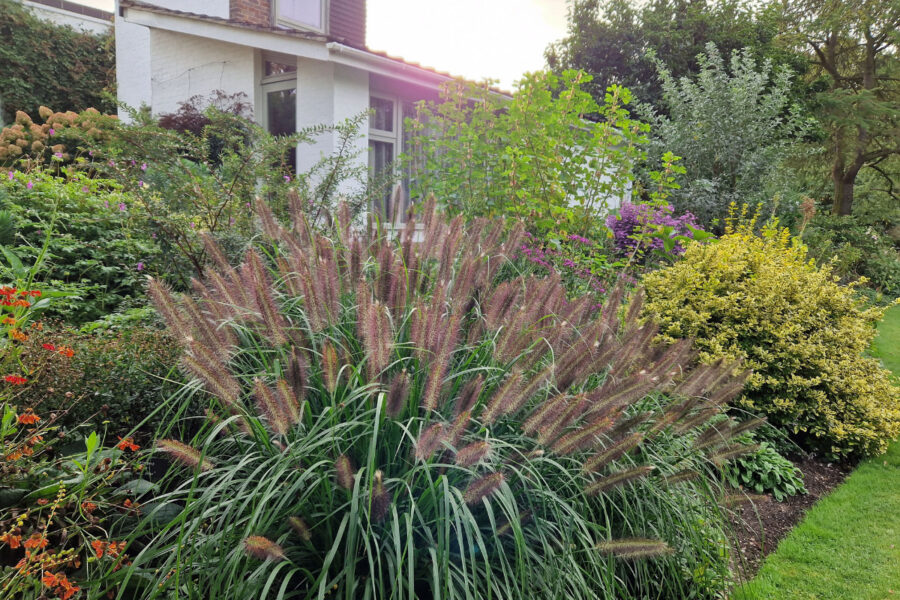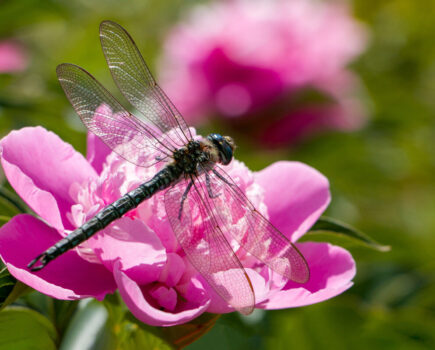Pennisetum is versatile and adds winter interest
Now is the time for grasses, gently shimmering and moving among late comers such as hylotelephium (sedum), aster and rudbeckia. We grow a huge range of grasses in the garden suited to wet, dry and general soils, all adding something different.
Perfect for a general soil, pennisetum is a widespread genus of roughly 80 species native to tropical and warm temperate regions around the world. Known commonly as fountain grass, they produce masses of flowers flowing from arching clumps of mounded foliage in mid- to late summer.
Considering their origins, they do require full sun, or very light shade, and a soil which is neither too wet nor too dry. Alternatively, suitable conditions can be achieved by growing in containers.
The flower spikes can be coloured, white-cream to red, with conspicuous bristles, hence the latin name pennisetum, penna meaning feather and seta meaning bristle-like. The seedheads in autumn persist well throughout winter extending their window of interest.
As the end of winter approaches, cut back last year’s stems to approximately 10cm (4in) from the ground to make way for fresh growth in spring.
Propagation at Beth Chatto’s
As with many of our grasses, pennisetum is propagated by division. We either dig a clump from the ground, or propagate from a pot grown clump in late spring, remove the central less productive part of the clump, and split the remaining material into pieces to pot up and grow on.
Goes well with:
- Rudbeckia
- Alchemilla
- Geranium
- Persicaria
- Aster
Wildlife credentials with our Dr Chris Gibson
Many of the perennial species of pennisetum have a tufted growth form, the tussocks harbour beneficial invertebrate predators, such as ladybirds, through the winter months, while those with larger seeds provide food for sparrows and finches.

Pennisetum ‘Black Beauty’ (fountain grass): Impressive dark flowers, reminiscent of fluffy tails, are held above arching foliage. Flowering in autumn and enjoying a sunny spot, with reasonable moisture. Height and spread: 1mx60cm (3.2x2ft).
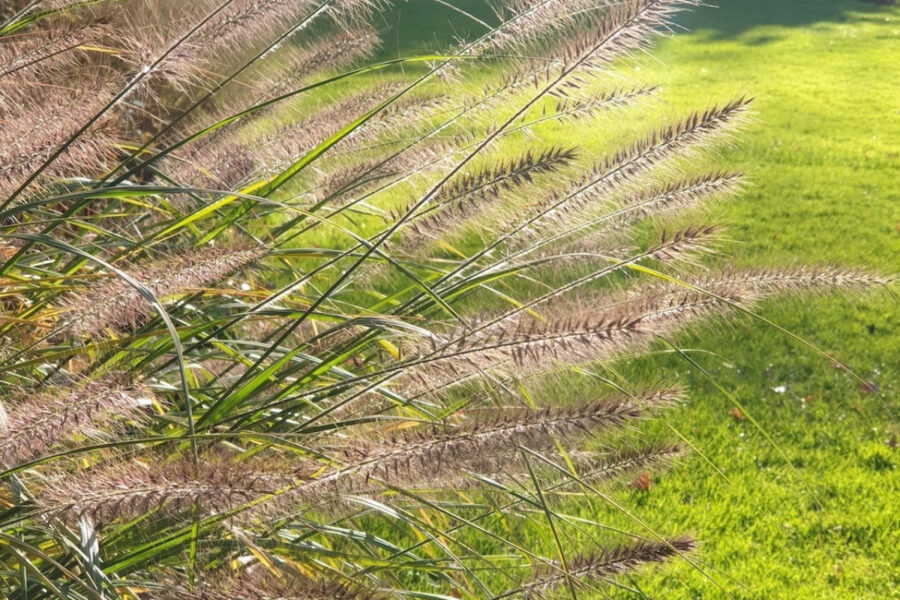
Pennisetum alopecuroides (Chinese fountain grass): Has the largest, most handsome, bottle-brush-like flower heads, dark green, shadowed with black, softened with long, fine hairs. Forms much admired feature at mown grass edge of a sunny border, every hair caught in low sunlight, or gilded with hoar frost. Height and spread: 90cm x 60cm
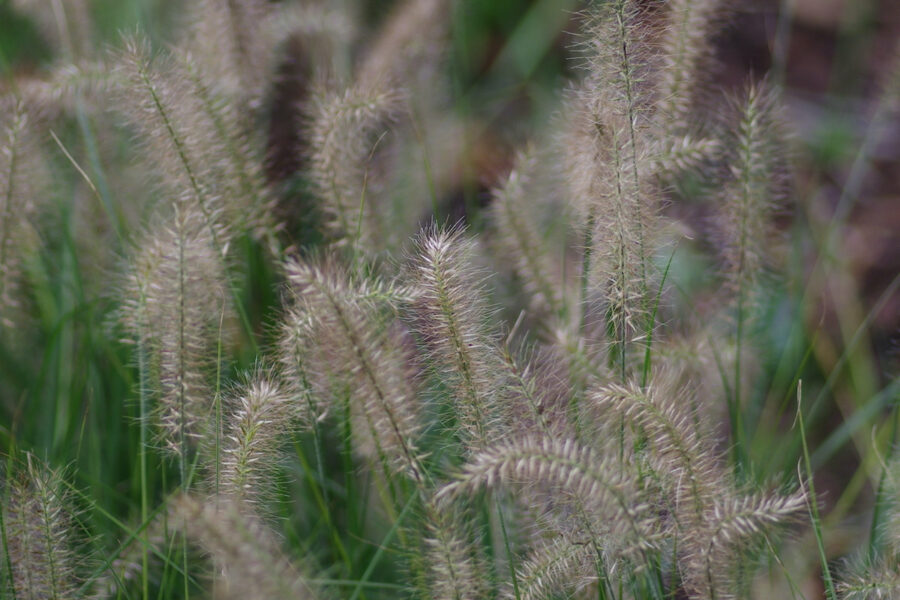
Pennisetum alopecuroides ‘Hameln’ (Chinese fountain grass)- Over narrow grassy leaves stand fan-shaped sheaves of thin wiry stems carrying caterpillar-like flower heads in autumn. Green at first, fuzzy with fine dark hairs, fading to pale brown in winter. Free flowering in open site, retentive soil. Height and spread: 60x60cm (3x2ft).
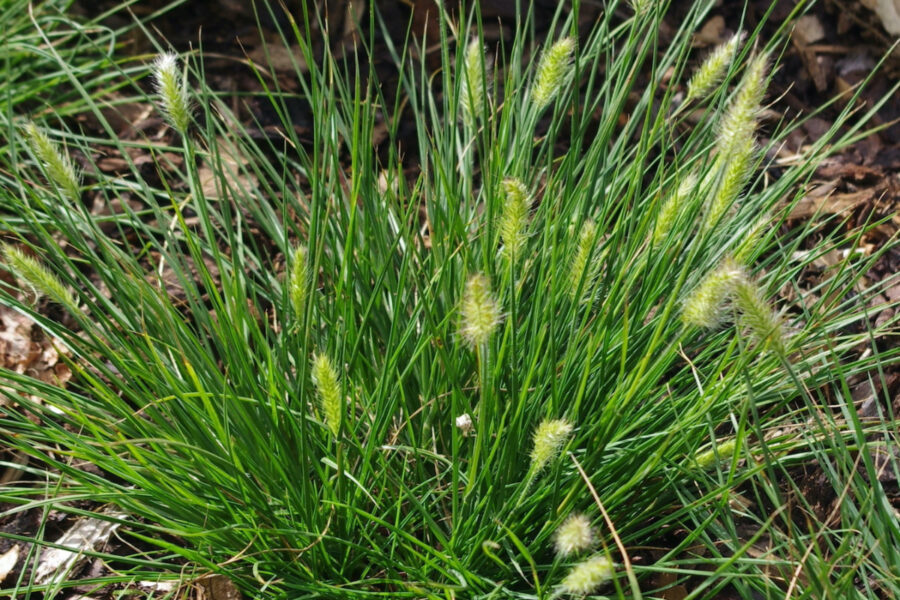
Pennisetum alopecuroides ‘Little Bunny’ (Chinese fountain grass): A perennial grass with narrow dark green leaves, turning gold in autumn. Attractive creamy white flowers. A shorter version of P. alopecuroides ‘Hameln’. Height and spread: 40x30cm (15x12in).

Pennisetum alopecuroides ‘Red Head’ (Fountain grass): A clump-forming perennial grass with narrow green leaves, often producing autumnal tones. Attractive bristly, red headed flowers in summer and autumn. Height and spread: 70x60cm (27x60in).
……
You can find out more about these world-famous gardens at www.bethchatto.co.uk
Find more tips, advice and articles like this at the Amateur Gardening website. Subscribe to Amateur Gardening magazine now

